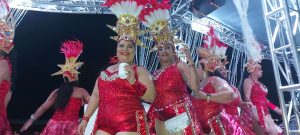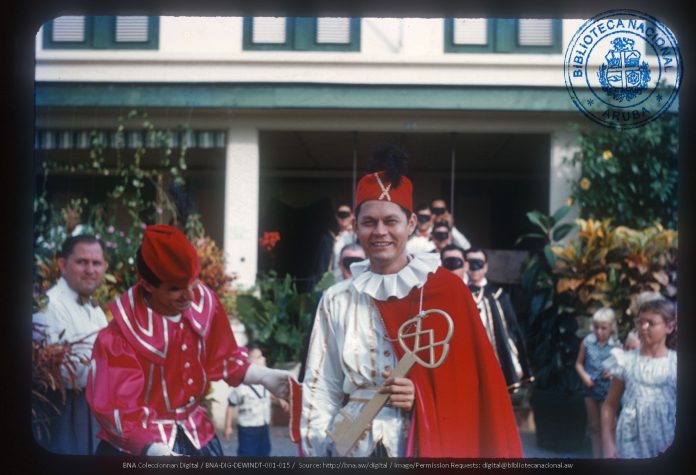Carnival lives mostly in the Caribbean and South America, but originated in Rome, Italy. Despite the drinking and partying aspects to Carnival, there are significant religious ties to the history. The festive season always occurs immediately before lent. Around 1650, Lent meant no parties, no good food or drinks, or any celebration of any type for that matter. 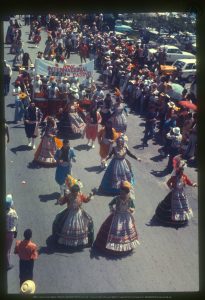
The word “Carnival” – Carnaval – is thought to mean farewell to flesh, referencing the Cathoclic practice of fasting red meat from Ash Wednesday until Easter. In the days leading up to Lent, all the goods, meaning all of the good including meat, dairy, fats and sugar had to be gone! So, you guessed it, the consumption of these delicious items resulted in a giant soiree. This was the beginning of a beautiful, grand, colorful, loud and bold tradition.
As the popularity grew, a domino effect took full swing and countries with rich religious roots adopted the concept of the fiesta. The “Carnival of Venice” garnered the title of the most famous carnival for the longest time, but nothing lasts forever. Cue in major competition.
The Italian traditions spread to the Catholic nations of Spain, Portugal and France. From the French, it spread to Germany and soon the Americans and Canadians also got a taste of it and took it in. From Spain and Portugal, Carnival was picked up with Catholic colonization to Latin America and of course, the Caribbean, which would later be one of the few regions where the tradition still thrives to this day.
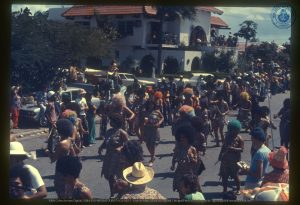
Around the 1800s, African and Indian slaves and servants from China and India accounted for most of the labor on Caribbean islands. Therefore, their customs were eventually incorporated into the European colonists’ tradition of Carnival, which is the root of what you see today.
The introduction of Carnival to the Caribbean is a bit blurred. It is tied to its colonialism, religious conversion and ultimately freedom and celebration. As mentioned above, Italian Catholics in Europe brought the pre-Lent celebration concept when they settled – and brought slaves to – Trinidad, Dominica, Haiti, Martinique and other islands.
Costumes and masks came into play at Carnival back in the day to scare off evil spirits. It was believed in order for people to be granted with good luck, they had to get dressed up. After the grand and elaborate costumes, came music and dance, which was incorporated to petition the gods of nature to grant fertility and health to the people, plants and animals.
In 1915, when the Royal Dutch Shell Oil Refinery opened on Curaçao, all three of the ABC islands joined forces to celebrate. However, the now-annual tradition was not born then.
In the 1940s, when immigrants from Trinidad came to work in Aruba’s Lago Oil Refinery, not only did they bring manpower for the plant, they also brought a thirst for festive celebration in their new home. From there, more and more activities were thought up and organized.
The festival in Aruba was at first, subtler, calmer and relatively quieter. Fast forward to today, crowds fill the streets in the vivacious parades, or are equally as thrilled to be standing on the sidelines watching them.
Every year, Carnival Queens of various age groups are selected representing the antique deities of Mother Nature. Music is integral to the Carnival parades, so a competition is held annually to see which Carnival King reigns supreme.
While Carnival traditions started to dwindle in many parts of the world, Aruba’s grew enormously in the 20th and 21st centuries. An extensive amount of festivities have been added over the years, including sunset parade, Jouvert Morning and Lighting Parade.
… and this is now!
Nowadays, you will notice the music got louder, with each Carnival group bringing their own music truck with a band on the streets, to the rhythm of Caiso & Soca.
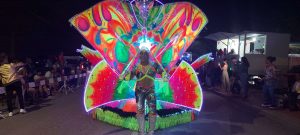
The costumes have also gotten more elaborate with a variety of stones, sparkles and feathers decorating, as well as portable decorative lights for the night-time parades.
One thing that endures, however, is a love for this tradition which inspires everyone in its reach to let loose, dance, and enjoy!
